Exceptional performances and a creative twist on a horror classic make Shadow of the Vampire essential meta horror viewing
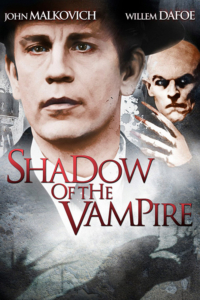 Three-time Oscar winner Daniel Day Lewis is renowned for his practice of method acting, in which you adopt the personality of your character or immerse yourself in situations akin to what will occur in the film you will be starring in to ensure a convincing performance.
Three-time Oscar winner Daniel Day Lewis is renowned for his practice of method acting, in which you adopt the personality of your character or immerse yourself in situations akin to what will occur in the film you will be starring in to ensure a convincing performance.
Fellow two-time Oscar winner Sally Fields, who portrayed Lewis’ wife Mary Todd Lincoln in the 2012 film Lincoln, related how Lewis never broke character as the sixteenth President of the United States for the duration of the production, whether on set or even at home. In fact, he would even text her, once again, in the character of Abraham Lincoln, which she found both amusing and somewhat exasperating.
Max Schreck, the German method actor who portrayed Nosferatu in the seminal 1922 vampire film Nosferatu: A Symphony of Horror, was well-suited for the part, firstly because of his imposing 6’3” frame, but also because his given surname means “fright” in German.
The director of Nosferatu, Friedrich Wilhelm Mernau, explained how “Schreck is a practitioner of method acting…and so will remain in makeup throughout the production…” He was so convincing, in fact, that rumors abounded that Schreck was actually the titular Nosferatu himself and not a mortal actor.
The idea that Schreck was actually a member of the undead was the basis for the 2000 film Shadow of the Vampire, directed by E. Elias Merhige.
Shadow of the Vampire opens with the information that the producers of Nosferatu could not obtain the rights to Bram Stoker’s novel Dracula, so to get around this pesky detail they simply changed the names of the characters and entitled the movie “Nosferatu”, supposedly an archaic Hungarian-Romanian term for vampire, though the entomology for this word is unclear.
Stoker’s widow sued the production company for copyright infringement and all but a few copies of the film were destroyed by court order. It wasn’t until 1929 that the film was shown again and was recognized for its artistic and technical genius.
John Malkovich portrays director Friedrich Wilhelm Mernau as a pretentious and demanding visionary who emphasizes cinema’s ability to give one “immortal life”. It is with this singular vision that Mernau and the cast and crew travel to the fictional German harbor town of Wisborg to film on location amidst ancient ruins and to meet with a mysterious actor named Max Schreck, played brilliantly by Willem Dafoe, who will be portraying Count Orlock (the name they used in place of Count Dracula).
Mernau explains to all involved Schreck’s all-encompassing approach to playing the Count, and as a result, he is somewhat admired for his dedication to his craft, though they are still off put by his frightening appearance and disturbing demeanor. And even when Schreck pounces hungrily upon an actor who cut his finger or catches a bat out of midair and sucks the blood out of it, everyone still manages to write these disturbing incidents off as a man wholly immersed in his part.
However, there are some private encounters between Mernau and Schreck where Mernau gives him rodents, and another time a large flask of blood, ostensibly to feed on. Upon receiving the flask, Schreck muses, “There was a time… when I… fed from golden chalices. But now…I feed like an old man pees – sometimes all at once, sometimes drop by drop…I feed erratically, and often enormously.”
Schreck also gives other clues that he once lived a life that was more lavish — a life that is long past, perhaps centuries distant. In conversation with the founder of the production company, German occultist Albin Grau, portrayed by Udo Kier, Schreck shares how he can empathize with the character Count Dracula in Bram Stoker’s novel. Schreck says the book makes him “sad” because Dracula had had no servants for over 400 years, and all of a sudden this man shows up with this real estate deal and Dracula is forced to try to pass as a mortal after being so many years alone and out of practice with the ways of men.
A woeful Schreck laments, “He has to feed him, when he himself hasn’t eaten food in centuries. Can he even remember how to buy bread? How to select cheese and wine? And then he remembers the rest of it. How to prepare a meal, how to make a bed. He remembers his first glory, his armies, his retainers, and what he is reduced to.”
It seems as if Stoker’s tale had struck a long-dormant nerve in the heart of Schreck, who, once again, we are uncertain if he is actually a vampire or just an amazing character actor, or perhaps he is simply extremely delusional and possibly insane. In one particularly poignant scene. Schreck is left alone in a room with a projector. He turns the projector on and is met with stunning scenes of sunrises and sunsets.
Schreck had earlier related how the one thing that he found “most desirable, yet unattainable” was “the light of the sun.” When Schreck speaks of himself he speaks only in terms of what was, as if he no longer fits in the modern world, or perhaps even with humanity itself.
Shadow of the Vampire is filled with masterful performances by esteemed actors, with Malkovich’s driven and ruthless performance as Mernau acting as a perfect foil, and sometimes a complement to Dafoe’s sinister and otherworldly portrayal of Max Schreck/Count Orlock.
The ambiguity with which the movie treats the question of Schreck’s mortality takes the viewer on a journey on a winding river in which one meanders from certainty to uncertainty in relation to the question. The cinematography is beautiful and dark, and combined with a dramatic orchestral score, the drama swells and recedes, like waves cresting and receding into a deep dark sea.
Shadow of the Vampire is meta-horror at its best, both self-aware, yet reluctant to believe what seems to be evident, for sometimes it is far more comforting to reside in the warmth of a dark unawareness, as the light of truth often reveals that which we are most afraid to admit we always knew was there all along.


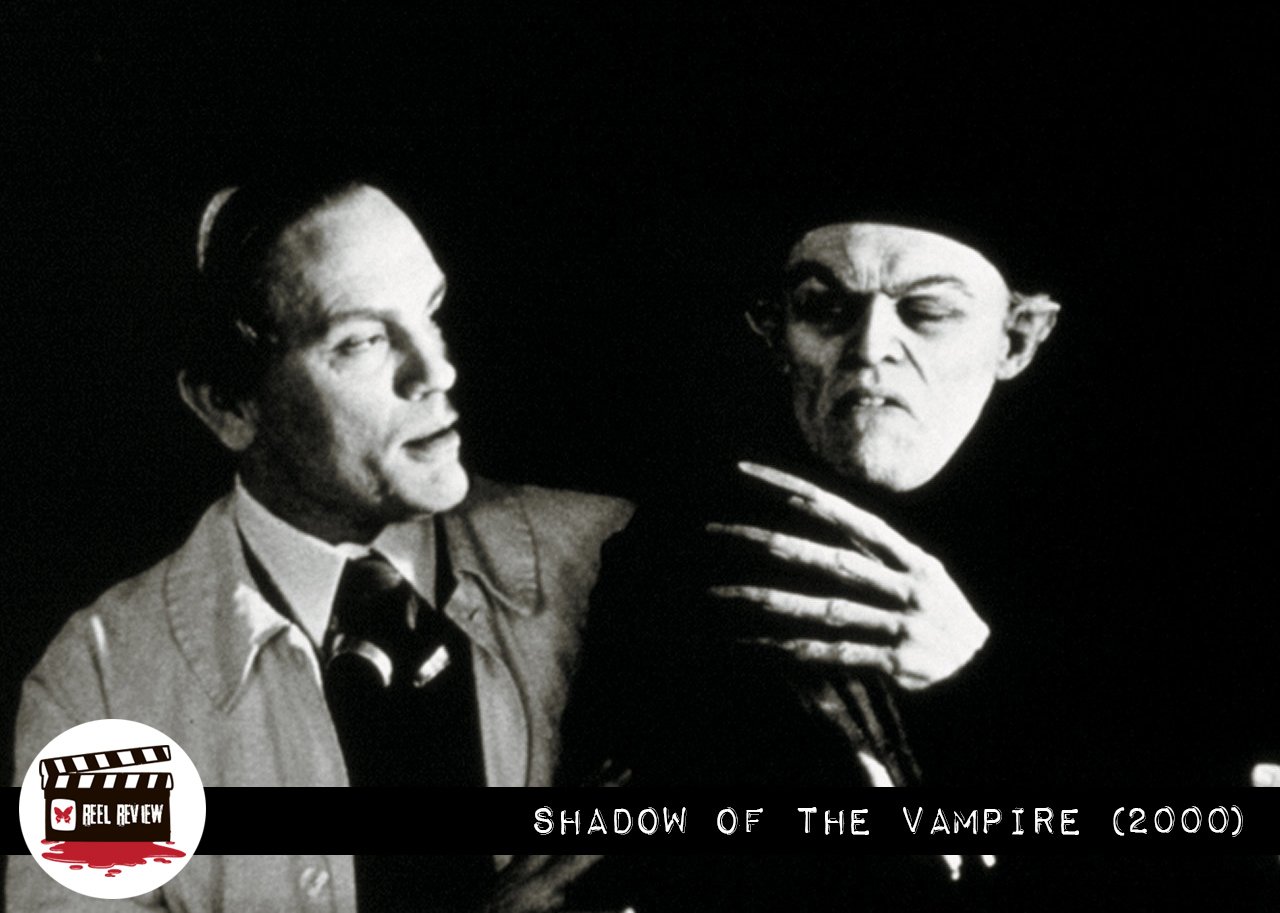
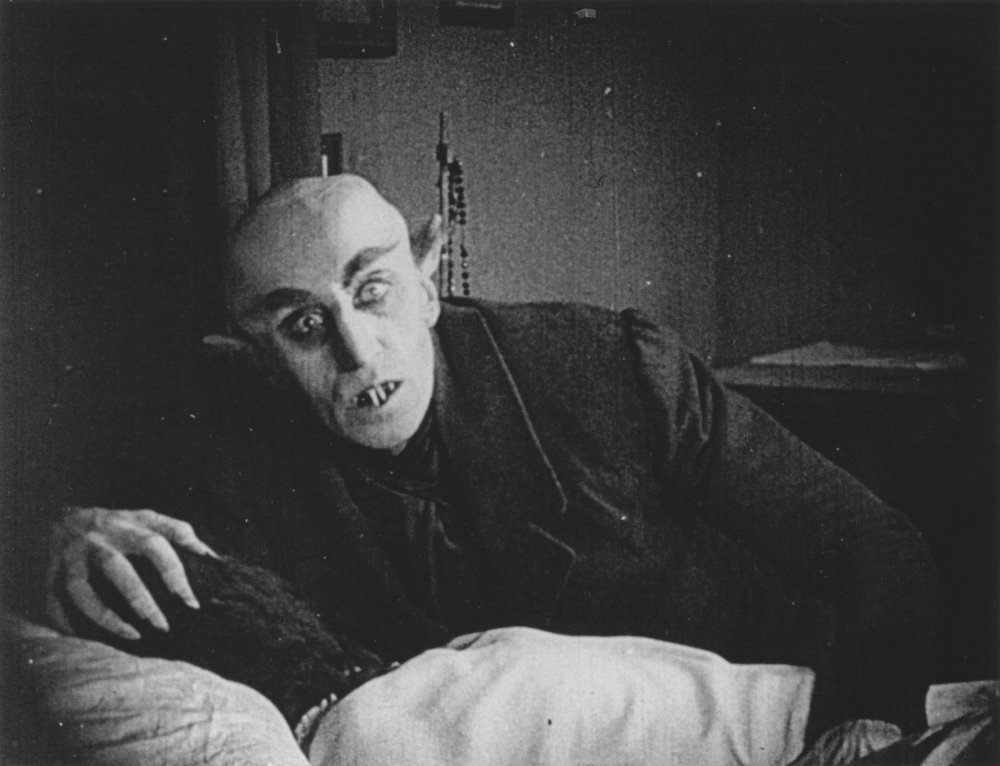
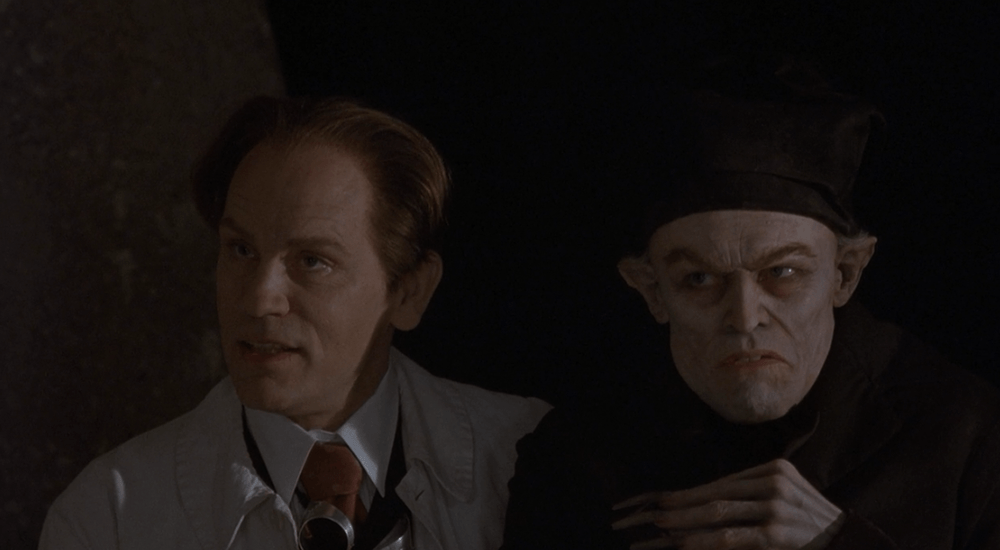
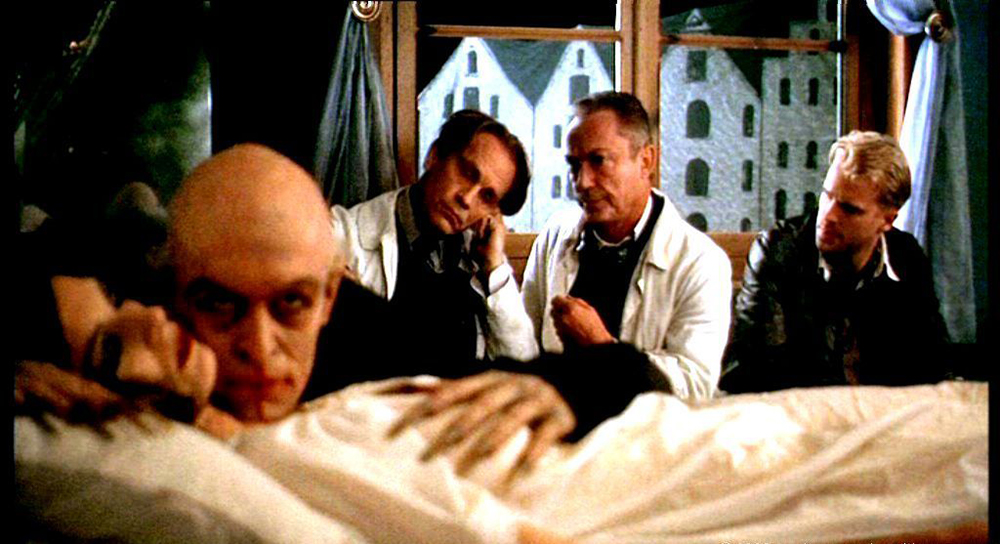
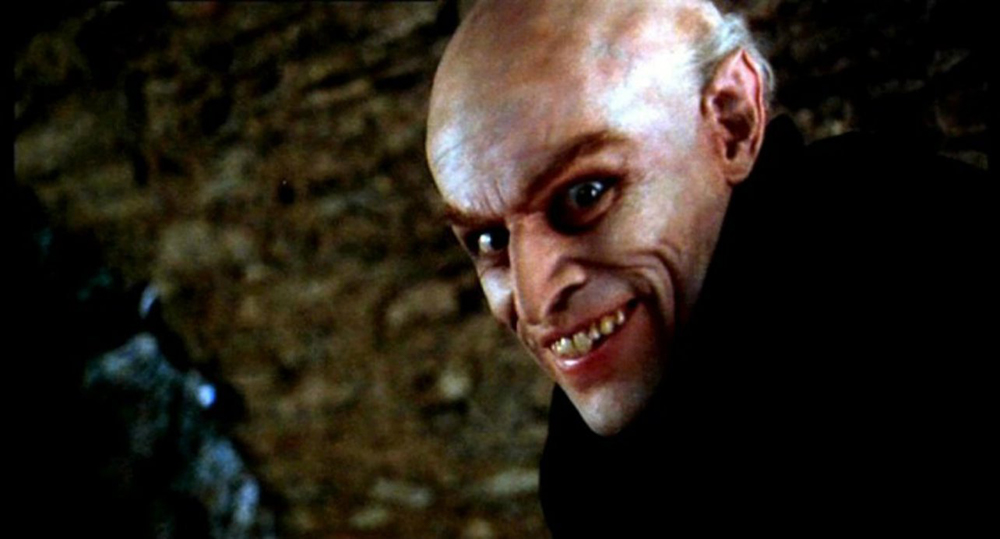
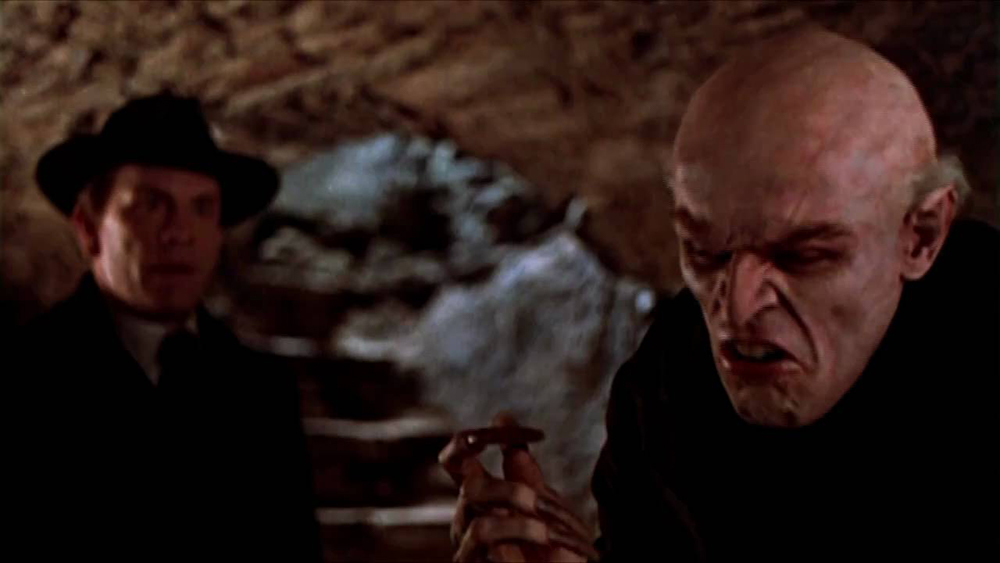
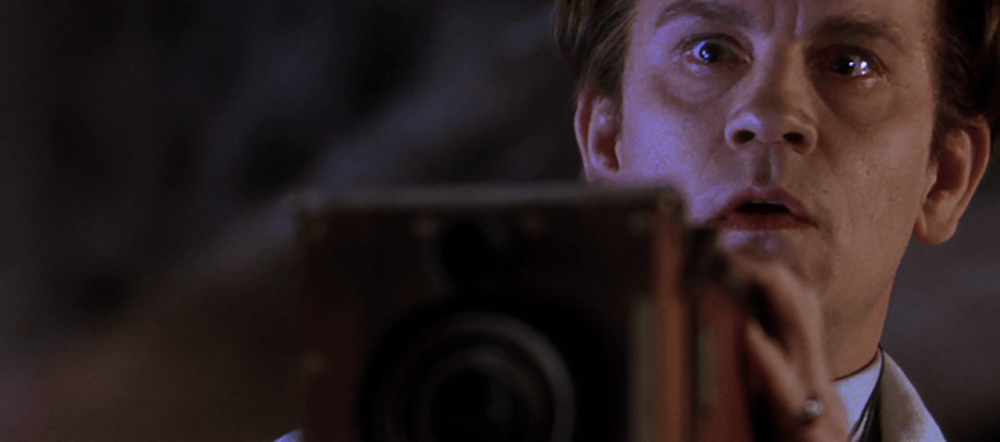
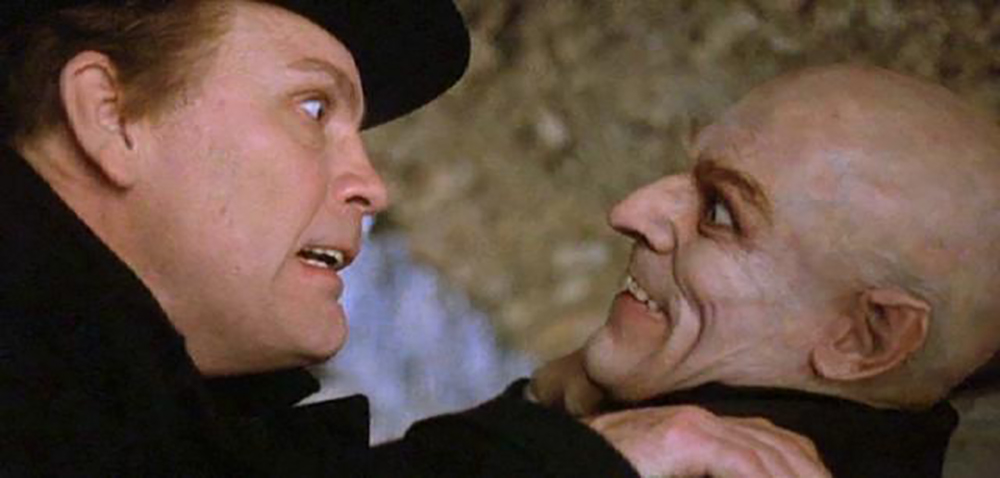
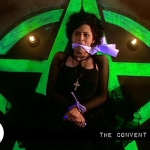








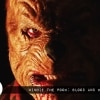
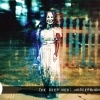
Follow Us!